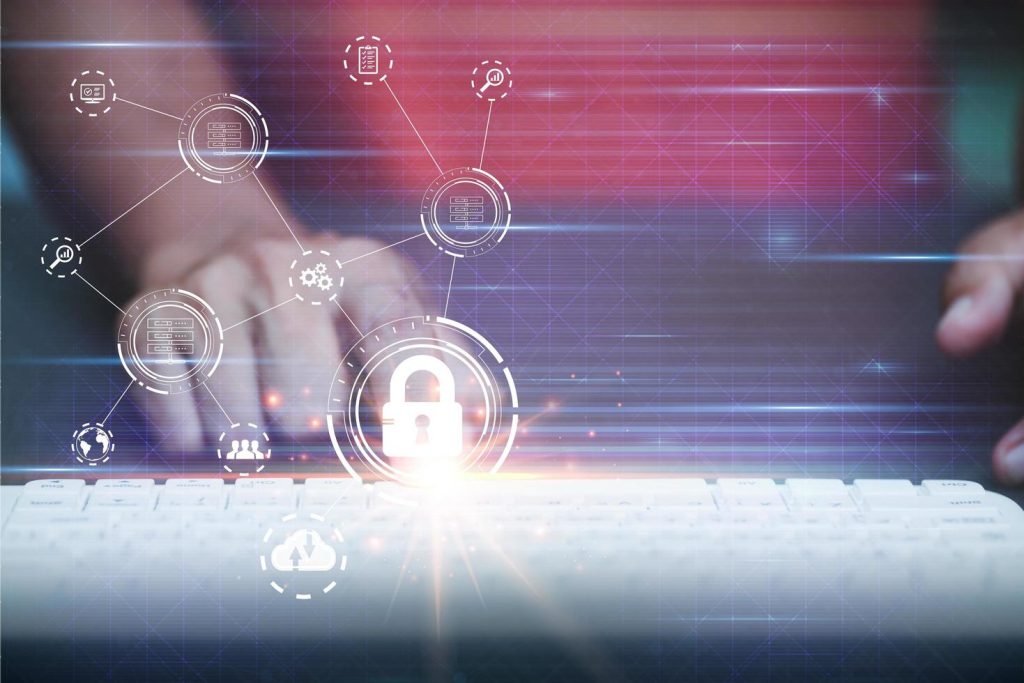
With the widespread use of tech devices and gadgets in all settings and areas of life and the increased risk of cyber-attacks which have become more sophisticated over time, cybersecurity has become a hot topic in recent years. Most people these days know about cybersecurity or at least have heard of the term but not all of them have a deep understanding of what it implies.
People often think that cybersecurity is something that falls under the responsibility of IT departments which have to keep hackers and other malicious entities at bay. While this assumption is partially correct, there’s a lot more to cybersecurity than that. To put things simply, cybersecurity is something that concerns us all: every person that uses a connected device of any kind has the responsibility to take the necessary measures to protect themselves against the threats that lurk in the virtual realm.
Since smart devices aren’t going anywhere and neither are cybercriminals, it’s worth expanding your cybersecurity knowledge and learning as much as possible on the topic. That means you might have to go beyond basic cybersecurity rules such as think before you click and gain a deeper insight into the ever-evolving world of cybersecurity. And we’ll make your quest a bit easier by providing you with some fascinating and a few frightening cybersecurity facts and statistics that most people are not aware of.
Cyberattacks are a lot more frequent than people think
Just because you don’t hear about cyberattacks in the news every day doesn’t mean they’re not happening. In fact, if all cyberattacks were reported by media outlets, this would be the only topic you’d ever hear about. That’s because cyberattacks are a lot more frequent than one might think. Statistics reveal that a new cyberattack takes place every 39 seconds. If you do the math, it amounts to 2250 attacks every day. That should serve as an incentive to check out Norton security offers in order to protect your devices against viruses, spyware, malware, phishing, hackers and other threats that
However, it’s only the biggest cyberattacks like the 2014 Yahoo hack, the Colonial Pipeline ransomware attack, or the PlayStation Network hack receive media attention. The rest fly under the radar and are only registered by those directly affected by the event.
Social media is often the chink in the armor
Hackers are always searching for security gaps and vulnerabilities to take advantage of. But sometimes, they don’t have to dig too deep to find them as many lay in the open. That’s the case with social media accounts. If you’ve been wondering where fraudsters, scammers and hackers direct their attention when they want to put their malicious plans into action, the answer is social media.
This shouldn’t be a surprise since people have become way too comfortable on social media lately, sharing every single aspect of their lives for anyone to see, and that anyone also includes cybercriminals. Given that everyone is using social media these days, these platforms have tuners into a favorite playground for hackers and a breeding ground for data breaches and phishing attacks. Keep that in mind next time you post or engage with someone on social media.
Using multi-factor authentication is a must
At an individual level, there are many things one can do to reduce the risk of falling victim to a cyberattack. Using strong passwords, making sure the sites you access are safe and thinking twice before clicking a link, keeping your software and devices updated or including security software like Norton 360 in your cybersecurity arsenal are all great measures that can help a lot in this respect.
However, if there’s one aspect in particular that every user should focus on that is multi-factor authentication. A simple step like turning on multi-factor authentication can go a long way in protecting your devices and accounts against potential cyber threats by adding an extra layer of security to the login process. Multi-factor authentication includes different elements such as one-time passwords, SMS, tokens, fingerprints, or voice recognition, so it’s up to you to choose the combination that works best.
Cyberattacks lead to 3-days downtime on average for companies
If cyberattacks can be extremely harmful to individuals, things can be just as bad for companies and organizations. Obviously, this is not a competition about who suffers the biggest losses, since these events can be extremely damaging for all parties involved. But if we focus on the impact that these attacks have on businesses and institutions, there’s no denying that the consequences can be disastrous.
It is estimated that the average length of downtime a company experiences after suffering a security breach is three days. This might not sound like much, but halting all operations for three days leads to immense losses that are very difficult to recover. Apart from the financial damage that comes with downtime, cyberattacks also put a company’s reputation at stake. In this context, it makes perfect sense that companies are investing heavily in security protocols and systems.
Healthcare is a prime target for data breaches
While cyberattacks affect all industries, some are hit harder than others. It seems like cybercriminals have a preference for the healthcare system which registers the biggest number of data breaches of all sectors. In the first half of 2022, the healthcare sector experienced a total of 337 breaches.
This is explained by the fact that healthcare organizations handle vast amounts of sensitive information such as medical records, financial data and so on, that can be valuable to cybercriminals. Also, the global pandemic which has burdened the healthcare industry tremendously over the past few years has also increased security vulnerabilities that were shrewdly exploited by cybercriminals.
Cyberattacks are not something one should take lightly. The more you know about this topic, the better prepared you’ll be to fight off cyber risk and keep yourself safe.




